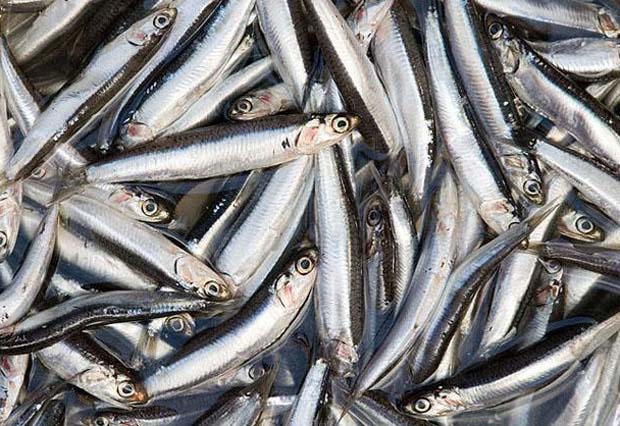The Fish Are Swimming North, Adapting to Climate Change and Leaving Fishermen Behind
[dropcap]A[/dropcap]nchovies aren’t just useful for pizza toppings. Together with sardines and mackeral, they are some of the most economically valuable fisheries in Europe. They also exist at a critical spot in the marine food web: they eat up all the plankton, and bigger fish, marine mammals, and seabirds chow down on them. These fish are known as “pelagic,” which means they live their lives away both from the seafloor and from the coasts. And they’re moving north.
Since they can swim long distances as adults and drift long distances while in the larval stage, they’re quite capable of adapting to climate change. They just have to follow the seawater to places with the right temperature. Being such an important group of species, both ecologically and economically, what does their northerly migration mean? That’s what University of Bristol biologist Ignasi Montero-Serra wanted to find out.
In one sense, this might seem like good news. The species on which coastal economies are most reliant are also among those that are likely to survive our changing climate. But many coastal economies are highly localized; the fish might move, but the fisherman will have a tougher time doing so. And these fish comprise some forty percent of the nearly nine million tons of fish brought on to European fishing vessels each year.
Montero-Serra collected data from 57,000 censuses of commercial fishing efforts along the European continental shelf between 1965 and 2012. These were expeditions in which researchers put big nets into the water and see just which fish they scoop up. It was possible thanks to the data collection efforts of the International Council for the Exploration of the Sea (ICES). Their results appear in the journal Global Change Biology.
The massive dataset allowed Montero-Serra to first determine that it’s sea temperature, not the abundance of plankton, that is primarily responsible for shifts in pelagic fish distributions. Over the past thirty years, the average temperature in the North Atlantic has increased about 1.3 degrees Celsius. “The overall relationships between rate of occurrence of pelagic species and (their prey) were weaker than the relationship found with sea surface temperatures,” write the researchers, meaning that the changing assemblages of fish are more tightly linked with sea temperatures than with plankton distribution.
And the fish are all moving north. Sardines and anchovies, which historically swam in sub-tropical waters, are increasingly being found in the North and Baltic Seas, while those that already had a more northerly distribution, like herring and sprat, have become less common there. In other words, these once-frigid seas are beginning to look more like home to species accustomed to warmer waters, and those who prefer cooler climes are moving elsewhere, too.
It may seem like a simple pattern: fish seek out areas where seawater is at the optimal temperature for their survival. But just because that seems to be the case for pelagic fish like sardines and mackerel doesn’t mean it’s true for other species that rely on habitats along coral reefs or on the seafloor, or which rely on highly localized food. The future for marine food webs isn’t as simple as predicting future water temperatures.
From a fisheries standpoint, the consequences are complicated. For some regions already reliant on particular group of species, it could mean a negative economic impact, but for others, it could represent new opportunities to for exploitation – not just for the tiny anchovies, but also for the larger fish that eat them. How everything ultimately shakes out – both ecologically and economically – is still very much an open question.
But at least one thing is certain: coastal fisheries must be as adaptive as the fish they’re used to harvesting, if they are to endure in our changing world. – Jason G. Goldman | 06 March 2015
Story source: Montero-Serra I., Martin Edwards & Martin J. Genner (2014). Warming shelf seas drive the subtropicalization of European pelagic fish communities, Global Change Biology, 21 (1) 144-153. DOI: 10.1111/gcb.12747.


